Simulation Curriculum
Simulation Curriculum
The Obstetrics and Gynecology Resident Simulation Curriculum is a four-year comprehensive simulation program designed to develop and enhance the skills necessary for the success of Ob/Gyn physicians. Not only does the Curriculum teach and maintain proper technical skills, but residents also learn multidisciplinary teamwork and communication critical to patient safety. The majority of simulations are conducted at the Simulation Center with multidisciplinary drills occurring also at Parkland Hospital.
These are the skills covered in the current Resident Simulation Curriculum with details provided below.
| Obstetrics | Gynecology | Family Planning |
|---|---|---|
| Forceps | Open skills | LARC placement |
| Ultrasound | Laparoscopic skills | Manual vacuum aspiration |
| In-situ OB emergency team traning | Hysteroscopy | |
| Robotics | ||
| Cadaver labs | ||
| Simulation Olympics |
Forceps
All residents on the Obstetrics rotation participate in faculty-led forceps simulation training. This includes a didactic session followed by practice sessions using mannequin models. The faculty perform assessments of resident knowledge and technical skills and coach them through proper placement and use of forceps.
Ultrasound
In addition to online SonoSim modules assigned throughout training, residents complete an ultrasound curriculum on the Clements MFM rotation that utilizes the 3D Systems Ultrasound Simulator at the Simulation Center.
In-situ OB Emergency Team Training
This is a multi-disciplinary training that occurs twice a month at Parkland and includes scenarios such as postpartum hemorrhage with massive transfusion protocol, severe hypertension and eclampsia, shoulder dystocia, and maternal code. Teams learn communication skills critical to patient safety and improving patient outcomes. Teams involved in these training sessions are comprised on PGY-2 and PGY-3 residents, certified nurse midwives, a CRNA or anesthesia resident, and L&D nurses.
Open skills
Beginning at intern orientation, residents are taught and demonstrate proficiency in open skills. Part one includes commonly used open surgery knot-tying and suturing techniques, such as one- and two-handed knot tying, running suturing, and subcuticular suturing, Part two covers more advanced open techniques aimed at increasing a resident’s ability to control suture tension, minimize instrument movement, and tie square knots.
Laparoscopic Skills
This course focuses on tasks that involve managing differences in tactile feedback, spacial orientation, manual dexterity, and psychomotor skills. Residents start with the basics on how to drive a camera with both flat and angled lenses and then they progress toward more advanced laparoscopic technical skills such as laparoscopic suturing and knot-tying. Each intern receives a box trainer than can be used at home to practice their skills. They are also provided time on the Gynecology and REI rotations to complete curriculum testing as well as certification testing for the Fundamentals of Laparoscopic Surgery, which is required by ABOG for board certification.
Hysteroscopy
Twice a year, the residency program and Simulation Center invite KARL STORZ to provide their C.A.R.E. program. This program provides hands-on training with diagnostic and operative hysteroscopic procedures. Residents practice assembly, disassembly, and operative tasks using rigid and flexible hysteroscopes and bipolar resectoscopes in low-fidelity and virtual reality simulation.
Robotics
The Robotics curriculum is a comprehensive, proficiency-based curriculum consisting of online pre-course work, hands-on training on docking and bedside assisting, console dry lab, and virtual reality training. After completing this curriculum, residents act as bedside assist and console surgeon under faculty supervision in the operating room to receive Intuitive certificate of training on the Da Vinci surgical system.
Cadaver Labs
On the FPMRS rotation, residents participate in a bi-weekly cadaver lab where they perform advanced anatomic dissection and simulation of hysterectomy and urogynecologic procedures.
Simulation Olympics
As a celebration of the end of every year, residents participate in a MIGS-sponsored Simulation Olympics. This is a team-building event that puts both surgical skills and communication skills to the test. Residents participate in events such as blindfolded laparoscopy, laparoscopic painting, and group events such as human foosball or hungry-hungry-hippo.
IUD placement At intern orientation, residents learn and demonstrate proper placement and removal of the Nexplanon contraceptive implant as well as copper- and levonorgestrel-containing IUDs. Residents also learn proper placement of IUDs following the third stage of labor. Manual Vacuum Aspiration Each year, residents participate in a simulation lab teaching uterine evacuation using a manual vacuum aspirator. This workshop also includes didactics on uterine evacuation using medication regimens of mifepristone and misprostol.
Simulation Courses
Jump to …
Open I: Basic Knot-Tying and Suturing Skills
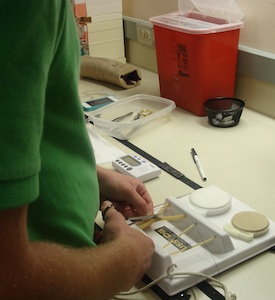
The Open I course is a three-part proficiency-based curriculum designed to teach fundamental skills for open surgery.
Part 1 is an orientation and pre-test on 12 commonly used open surgery knot-tying and suturing techniques; Part 2 involves independent practice; and Part 3 is a post-test to verify that residents are indeed proficient in basic knot-tying and suturing skills.
Open II: Intermediate Knot-Tying and Suturing Skills
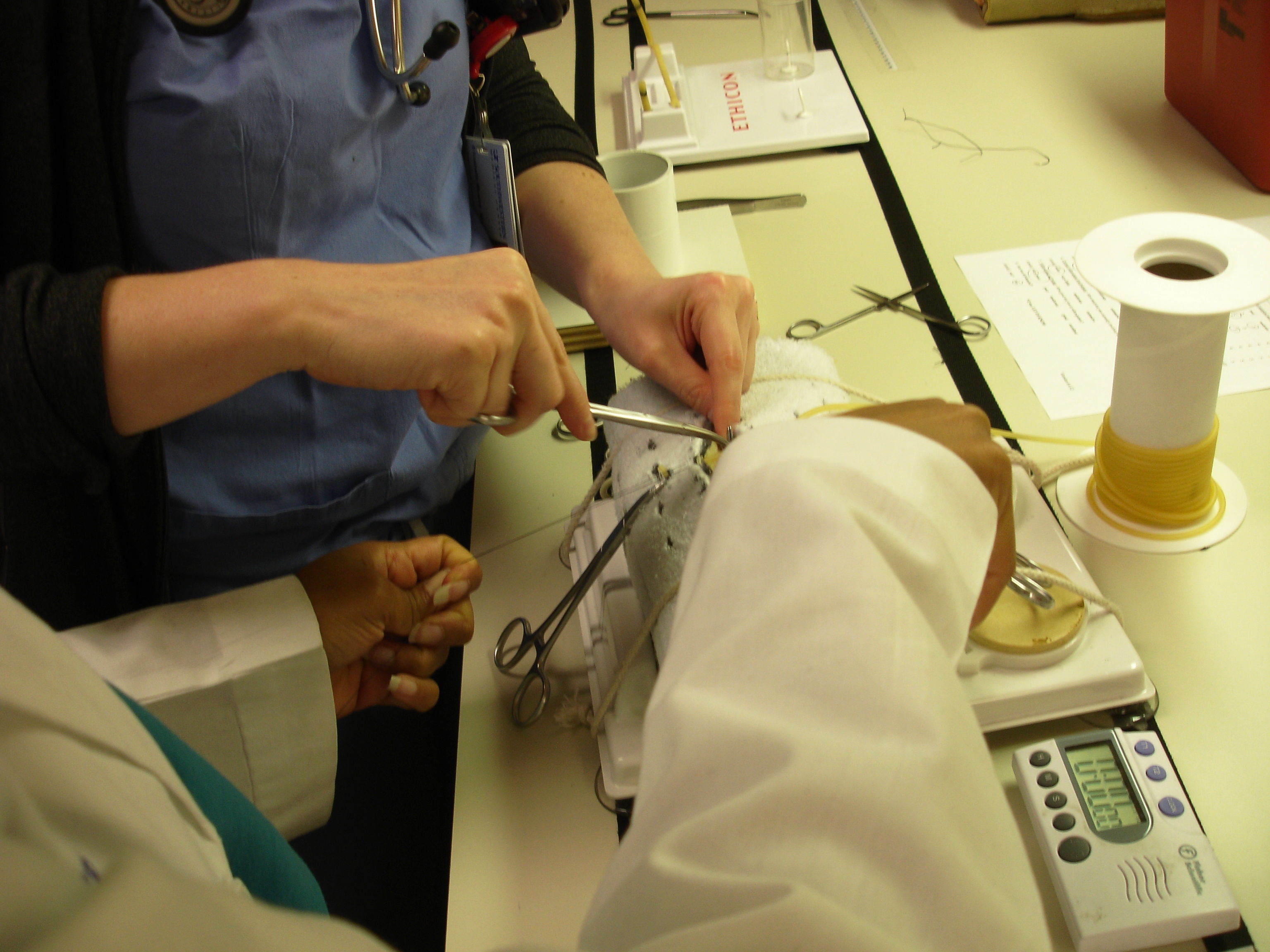
Open II encompasses six more advanced knot-tying and suturing techniques aimed at increasing a resident’s ability to control suture tension, minimize instrument movement, and tie square knots. Ob/Gyn residents take this course toward the end of their intern year.
Lap I: Basic Laparoscopic Skills (Southwest Stations)
The course is composed of five proficiency based tasks designed to teach technical skills required in basic laparoscopic surgery.
Lap II/ Fundamentals of Laparoscopic Surgery (FLS): Advanced Laparoscopic Skills
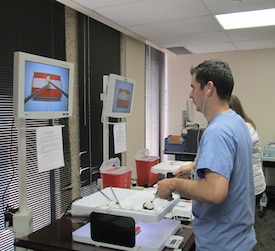
The Lap II course focuses on five tasks involving managing differences in tactile feedback, manual dexterity, psychomotor skills, knot-tying, and precision cutting. Mastery of this three-part, proficiency-based course enables residents to optimize their experience in the operating room.
Cesarean Delivery Training Curriculum
Cesarean deliveries are taught in a three-part training curriculum that includes formal didactic sessions.
Forceps Course
We feel very strongly that in competent hands, forceps are extremely useful and safe tools. During this course, which is directed toward second-year residents, trainees participate in simulated forceps deliveries using a pelvic model. Trainees also attend a 3-hour didactic session covering topics such as instrument selection and anatomy, procedural techniques, and evaluation of the maternal pelvis.
Vacuum-Assisted Vaginal Delivery Course
This course is given in the late spring as the fourth-year residents are planning to enter their own practices. It consists of a formal didactic session followed by simulated vacuum-assisted vaginal deliveries on a pelvic model.
Hysteroscopy Course
Trainees learn instrument assembly, troubleshooting, distention fluid management, and proper usage of equipment. Trainees also practice operative procedures, including resectoscopy and hysteroscopic sterilization techniques, in the simulation lab.
Laparoscopic Hysterectomy and Dissection
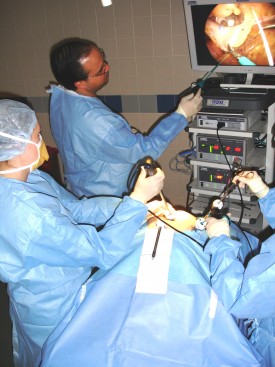
The Pelvic Anatomy and Laparoscopy course is structured into four half-day sessions consisting of lectures, hands-on surgical procedures, laparoscopic training, and dissection of unembalmed cadavers.
Trainees who complete the course acquire knowledge of pelvic anatomy, proper laparoscopic and robotic surgical technique, and good operative judgment.
Basic Skills Course for Robotic Console Surgeon
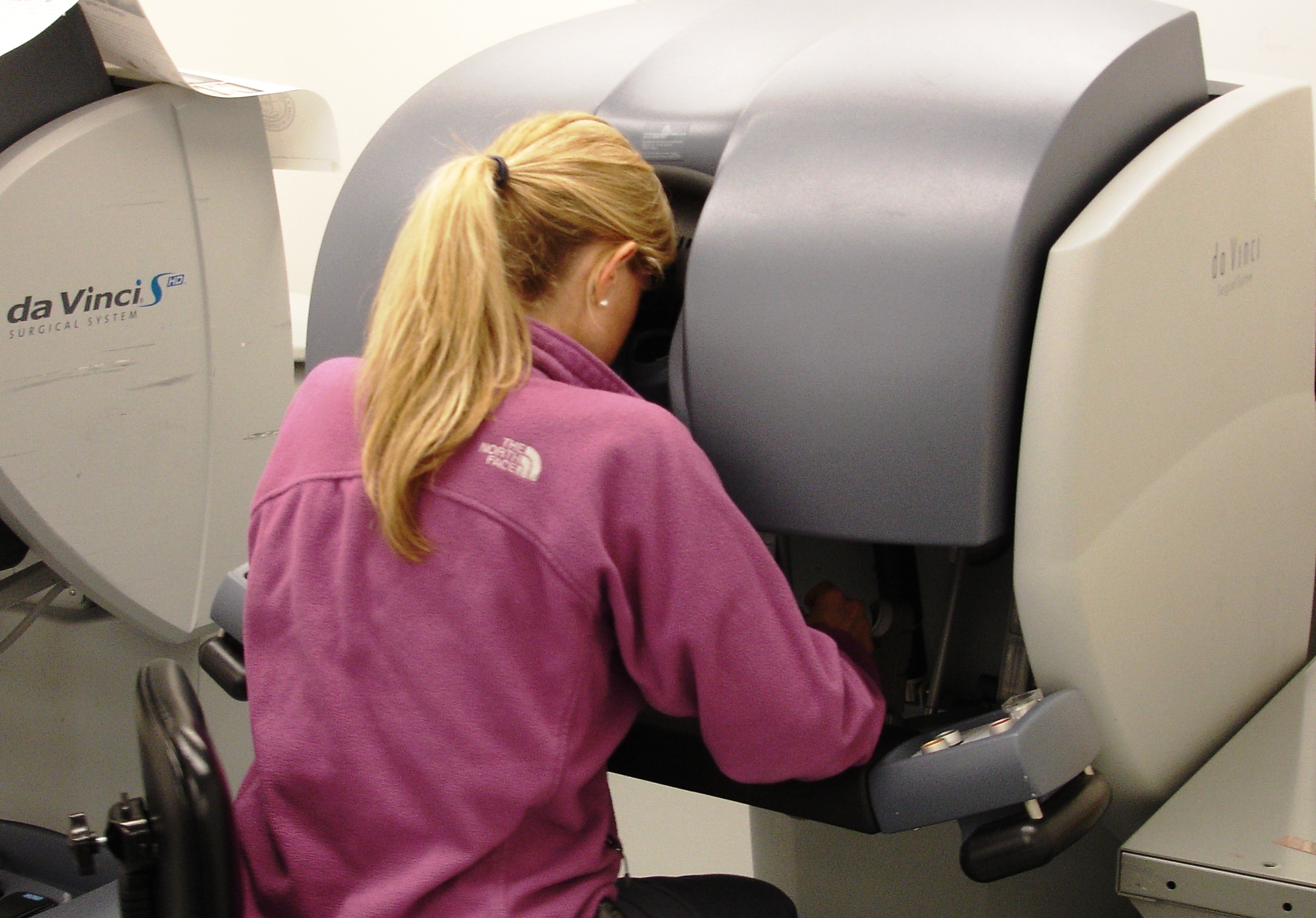
The Robotic Console curriculum was developed for surgical trainees to acquire basic robotic surgical skills on the da Vinci platform. The course is a comprehensive, proficiency-based curriculum consisting of online pre-course work, a hands-on interactive orientation, personal training sessions, and pre- and post-tests. Upon completion, Ob/Gyn residents receive certification for basic robotic console skills.
